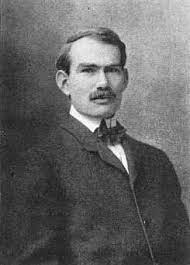Lee de Forest Biography

BIRTH: August 26, 1873 Council Bluffs, Iowa, USA
DEATH: June 30, 1961 (aged 87) Hollywood, California, USA
Lee De Forest Biography : American Inventor, Facts
Lee de Forest was an American inventor who invented the Audion vacuum tube, which was used in radios. He was known as the ‘Father of Radio’ and the ‘Grandfather of Television’. Forest was also hailed as one of the founders of the electronic age.
Lee de Forest was born on August 26, 1873, in lowa to Henry Swift de Forest and Anna Robbins. His father worked in the ministry and wanted his son to follow the same path. But, young Lee wanted to become an inventor and loved science. He used to take interest in machinery as a kid. For his education, Lee went to Mount Hermon School. After he graduated, he attended the Sheffield Scientific School at Yale in 1893. He continued his studies and achieved his dream of becoming an engineer. In 1899, he earned a PhD in physics and submitted his thesis titled Reflection of Hertzian Waves from the Ends of Parallel Wires. The renowned physicist Willard Gibbs helped him with his thesis.
After he graduated from Yale, he started looking for jobs. He began working at the Western Electric Company. Forest carried out experiments and created an electrolytic detector of Hertzian waves. In 1902, he opened his own company called the American De Forest Wireless Telegraph firm. He developed and sold radio equipment. He planned to earn money from his inventions, but his business partners deceived him. In just a few years his company went bankrupt.
In 1906, he created an electronic vacuum tube, the ‘Audion’. It was known as the first electronic device that converted a weak sound into a stronger signal. He then developed a three-electrode device, which was used to detect the electromagnetic waves. In 1913, he sold the patent for this invention.
Forest established another company named The Radio Telephone Company. But his second company failed as well. In 1911, he was offered a research job at the Federal Telegraph Company. Forest’s major work came about in 1916 when he broadcasted the first radio advertisement. He even aired the presidential election report on the radio.
The next five years, he fully concentrated on his new inventions. He stopped most of his radio research and developed an optical sound-on film system, the Phonofilm. He called it the ‘De Forest Phonofilm process’. In 1922, he started the De Forest Phonofilm Company. The Phonofilm was able to send sound directly onto the film. It was used to record stage performances, speeches and music concerts. Hollywood also began to use sound-on-film systems, and it was quite profitable.
Forest premiered eighteen short films, made in Phonofilm, on April 15, 1923, at the Rivoli Theater in New York City. In 1926, Hollywood introduced a new method for sound film. The sound-on-disc process was developed by the Warner Brothers. But Forest’s Phonofilm was still in demand. Almost 200 short films were made by the Phonofilm process, and many are stored in the collections of the Library of Congress and the British Film Institute.
Forest was also linked to politics. He was a conservative Republican and an anti-communist. But, he eventually reduced his involvement in politics.
Forest lauded for his significant was contribution to science and technology. He received many awards and honors for his inventions. In 1922, he was given the IRE Medal of Honor for his contributions to radio. He was also awarded the Edison Medal by the American Institute of Electrical Engineers.
In 1957, Forest was a guest celebrity on the television show This Is Your Life. He was introduced as the ‘Father of Radio and the Grandfather of Television’. He even authored an autobiography named Father of Radio. He suffered a severe heart attack in 1958, and remained mostly bedridden till his death.
Forest got married and divorced three times. His fourth marriage was to Marie Mosquini in 1930.
Lee de Forest died on June 30, 1961, at the age of 87. After his death, his works were donated to the Perham Electronic Foundation. They are now on display at the Perham Collection of Early Electronics.
- What is meant by Database Management System?
- Discuss the advantages and drawbacks of database.
- What do you mean by database ? Discuss its Characteristics.
- What is Data Mining?
- What are the conditions of communication?
- What do you mean by business communication ?
- organization / Differentiate between classical and modern theory of organization
- What is forecasting






